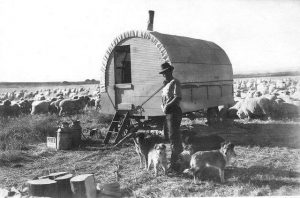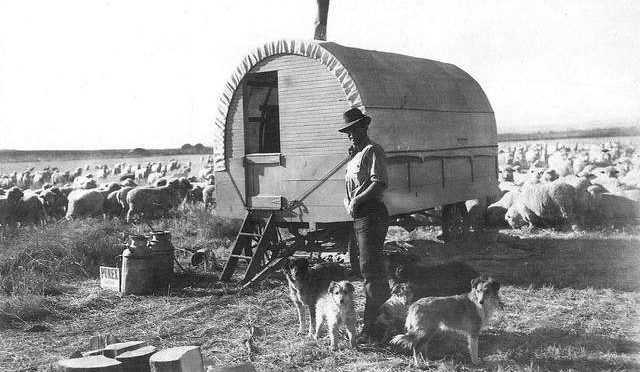Note that, if you get this post via email, the return-to address goes no where, so please write blas@buber.net if you want to get in touch with me.
Today, the Basque sheepherder is viewed as an almost romantic figure, epitomizing the hard work of Basque immigrants who came to the United States to find a better life. But, sheep weren’t always seen so positively, and particularly at the end of the 1800s and in the early 1900s, there was almost open warfare between sheep and cattle interests, with the Basque sheepherder, sometimes called “landless and marginal peasants whose activities were detrimental to the public interest,” in the middle of the conflict. More than a few Basque herders lost their lives in feuds between sheep and cattle men.

- In February, 1921, while grazing his sheep in Utah, a young Basque sheepherder named Felix Jesui took his band onto land belonging to Oscar Turner’s Lazy Y Ranch. When the foreman of the ranch, Charlie Glass (an interesting man in his own right), confronted Jesui and told him to take his band off the ranch’s land, Jesui drew his gun. Glass was the better marksman and killed Jesui. He immediately turned himself into the sheriff and, after a trial in Moab, was acquitted. He returned to work on the ranch until, sixteen years later, Glass found himself playing poker with a couple of Basque sheepherders, Joe Savorna and Andre Sartan. After the game, they all decided to head to another town for an even bigger game. Glass was found the next morning with a broken neck, after the Basques’ truck flipped, though the two Basques were relatively unscathed. Turns out those Basques were Jesui’s cousins…
- Such violence had been going on for many years. Back in 1877, in the Rose Valley of Ventura County, California, another Basque herder, Ydelfonson Urtasun, was shot for trespassing on a cattleman’s land. Jesse Jefferson Howard was arrested for Urtasun’s murder, but he was well liked in the area and he was able to escape his cell. He eventually made his way to Arizona where he became a legend for hunting bear.
- In Arizona, sheep were again at the heart of conflict. The biggest fight, the Pleasant Valley War of 1882-1892, was between two cattle ranching families, the Grahams and the Tewksburys. However, the Tewksburys had begun to branch out into sheep. At one point, they hired a Basque herder (in some accounts he is referred to as Navajo, but nothing more seems to be known about the poor fellow) to move sheep to Pleasant Valley. He was murdered by one Andy Cooper (also known as Andy Blevins), a member of the Graham faction. This murder became a flashpoint in the conflict, leading to a much bigger fight between the two factions.
- In 1909, near the town of Ten Sleep, Wyoming, a group of herders and their camp were attacked by cattlemen in what became known as the Spring Creek Raid. Three men were killed, two wagons were burned, and somewhere near two dozen sheep were shot. The dead included Basque sheepman Joe Allemand, his partner Joseph Emge, and Allemand’s nephew Jules Lazier. The brazenness of the attack led to the conviction of the cattlemen and an end to the killings in Wyoming’s Sheep Wars. Allemand and Lazier’s French Basque origin prompted a response from the French Embassy, elevating the murders to international attention.
Discover more from Buber's Basque Page
Subscribe to get the latest posts sent to your email.


